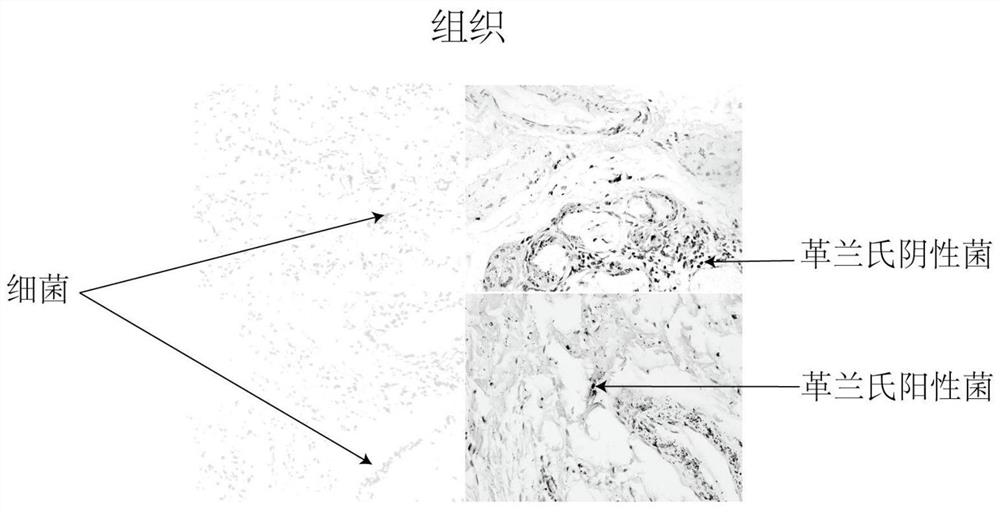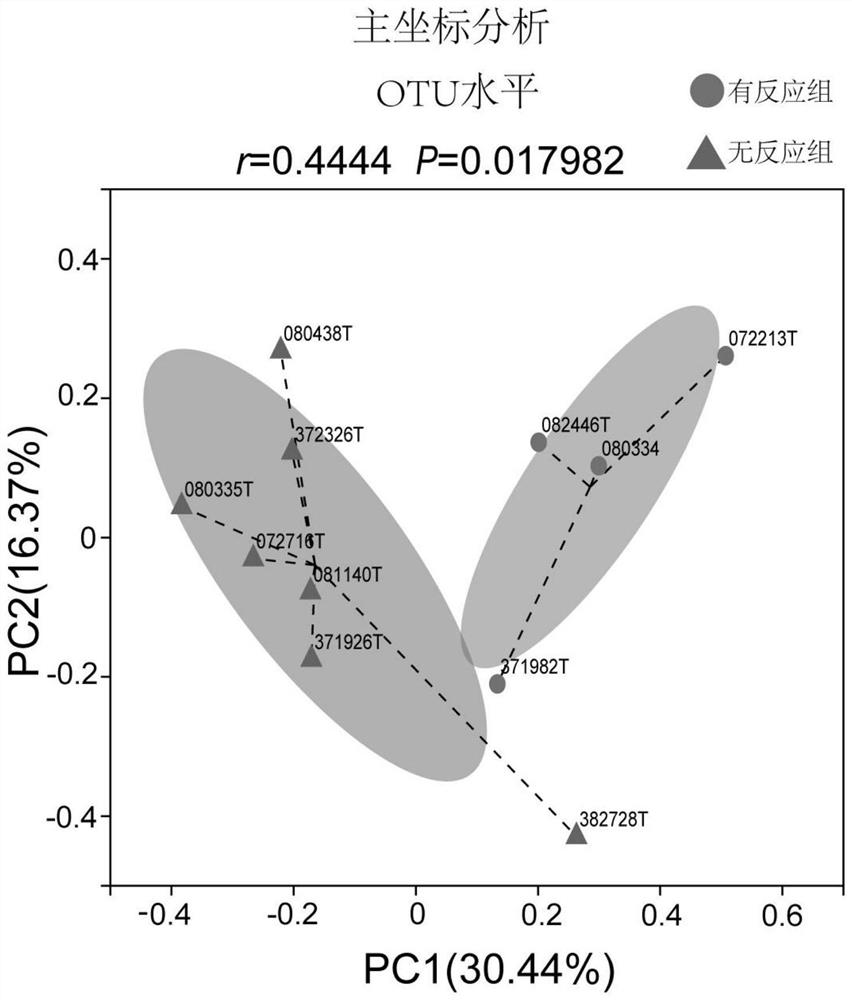Marker for predicting curative effect of tumor chemotherapy combined with immunotherapy and application thereof
An immunotherapy and marker technology, applied in the field of biomedicine, can solve problems such as difference in effect, and achieve the effect of low price, high accuracy and small tissue sample size
- Summary
- Abstract
- Description
- Claims
- Application Information
AI Technical Summary
Problems solved by technology
Method used
Image
Examples
Embodiment 1
[0022] Example 1: Esophageal cancer paracancer and a large number of microorganisms in tumor tissue
[0023] Surgical removal of esophageal cancer specimens using sterile cryopreservation tubes and preservation under sterile conditions. Prepared frozen sections after fixation at the time of use, using RNAscope 16sRNA probes, and RNAscope® 1X target repair reagents were used in the HybEZ ™ hybridization furnace to probe microorganisms in esophageal cancer paracancer and tumor tissues. At the same time, immunohistochemical staining was used to stain the tissues in the same part with LPS and LTA, and the results were as follows Figure 1 As shown, there are a large number of microbial 16sRNA in the paracancer and tumor tissues of esophageal cancer, as well as the expression of LPS and LTA. Microbial 16sRNA was measured for paracancer and tumor tissues of esophageal cancer, with results such as Figure 2 As shown:
[0024] from Figure 2 It can be seen that a large number of microorganis...
Embodiment 2
[0026] Example 2: There are significant differences in microorganisms within the tissue of patients who respond to treatment or do not respond
[0027] The 16sRNA results of microorganisms in tumor tissues of patients with esophageal cancer showed that Figure 4At the gate level, the composition of microorganisms in the responding and non-responding groups was analyzed, and there were significant differences in microorganisms within the tumor tissue compared with patients who responded to treatment and patients who did not respond, such as Figure 3 shown; Figure 5 From the more subtle genus level analysis, it was found that the reactive and non-reactive groups, Streptococcus spp., Clostridium spp., Streptococcus digestion, Micromonas spp., Carycete spp., etc. were microorganisms with significant differences.
[0028] The above data can prove that there are significant differences in microorganisms within the tumor tissue of patients who respond to or do not respond to treatment.
Embodiment 3
[0029] Example 3: A variety of microorganisms have the effect of predicting the therapeutic efficacy of patients
[0030] The above data have been concluded that the difference between the microorganisms in the immunotherapy response group and the non-response group is related to the enrichment of T cells, thus establishing a relationship with the effect of immune combination chemotherapy. Further analysis of the correlation between five bacteria with predictive efficacy (genus level) and efficacy of immune combination chemotherapy treatment is further analyzed by Pearson correlation, such as Figure 6 The results shown show that streptococcus was positively correlated with CD8+ T cell infiltration and infiltration with CD4+T and FOXP3+T cells, while Clostridium spp., Streptococcus digestion, Micromonas spp. and Carycea spp. were negatively correlated with CD8+ T cell infiltration and positively correlated with CD4+T and FOXP3+T cell infiltration.
[0031] Then, the content of vari...
PUM
 Login to View More
Login to View More Abstract
Description
Claims
Application Information
 Login to View More
Login to View More - R&D
- Intellectual Property
- Life Sciences
- Materials
- Tech Scout
- Unparalleled Data Quality
- Higher Quality Content
- 60% Fewer Hallucinations
Browse by: Latest US Patents, China's latest patents, Technical Efficacy Thesaurus, Application Domain, Technology Topic, Popular Technical Reports.
© 2025 PatSnap. All rights reserved.Legal|Privacy policy|Modern Slavery Act Transparency Statement|Sitemap|About US| Contact US: help@patsnap.com



